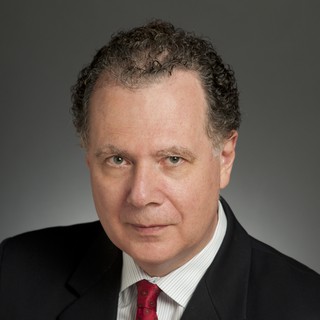Crossposted from Asia Times
It was the tragedy (and sometimes tragicomedy) of a lesser, second generation of neo-conservatives to imagine that the colonial construct that called itself Iraq, beset by ancient ethnic and sectarian hatred, and wallowing in backwardness and ignorance, could reproduce what the profoundly Catholic, formerly democratic, and modern nation of Poland had done. But that does not obviate the neo-conservatives’ accomplishments.
The neo-conservatives were responsible for the Reagan economic reforms that launched the longest economic expansion in US history. Irving Kristol’s small but influental magazine The Public Interest first brought the work of future Nobel Laureate Prof. Robert Mundell to broader public attention in 1974, and it was Kristol, then head of the American Enterprise Institute, who gave my future business partner Jude Wanniski a grant to write his book The Way the World Works. Mundell was not a conservative of any recognizeable ilk. On the contrary: He was trained by the arch-Keynesian and liberal economist Paul Samuelson at MIT. Mundell took the one-period, closed economy Keynesian model and turned it into a multi-period, global model, and reached radically different conclusions.
The conservatives of the 1970s (like today’s Tea Party) were small-government libertarians who wanted to cut taxes in order to “starve the beast,” that is, force cuts in government spending. Milton Friedman, their standard-bearer, was obsessed with now-discredited monetary rules and odd schemes like allowing each bank to issue its own currency after the fashion of wildcat banking in the 1940s. Ronald Reagan like to quote their anti-government rhetoric, but followed Mundell.
As Reuven Brenner and I summarized the issue some years ago:
Robert Mundell showed that an increase in government debt may sometimes represent wealth. It happens when a well-funded public debt (to borrow Hamilton’s term) is supported by future prosperity, which implies both more creation of assets and more tax revenues. Tax cuts stimulate growth and produce an increase in wealth when the rise in tax revenues exceeds the interest that the government pays on the bonds it issued to cover the initial loss in revenue. This insight underlay the “supply-side economics” of the Reagan administration, unfortunately reduced even by some of its backers into simplistic caricature.
Yet, as Mundell observed, curing the stagflation of the 1970s required fighting inflation with tight monetary policy while promoting creation of assets through tax incentives. That is just what Paul Volcker’s Federal Reserve and the Reagan administration did during the early 1980s, launching a quarter century of noninflationary prosperity.
Reagan’s tax cuts led to a substantial increase in government debt, and the government debt represented an addition to wealth, just as Mundell said it would–the opposite of the mainstream conservative agenda. The National Review never would have proposed this (and didn’t). What is more, Reagan launched a massive military buildup, including an enormous increase in government funding for basic R&D in the context of the Strategic Defense Initiative.
To be sure, the Reagan tax cuts opened wide the gates of entrepreneurship, and helped new industries and new companies overturn the stagnant corporate giants of the 1970s. Reagan unleashed the forces of the private market, but he did so by using fiscal and monetary tools in a way that the traditional conservative movement abhored on ideological grounds.
The neo-conservatives didn’t invent Reaganomics, but they adopted it and sold it to the body politic, through Jude Wanniski’s bully pulpit at the Wall Street Journal and elsewhere. It helped that unlike the traditional conservatives, they bore no ideological prejudice against using the mechanisms of government where those mechanisms were helpful.
In the heady days after the fall of Communism, we all believed that we had discovered the key to everything, what Wanniski called “the way the world works.” A few trips to Russia in 1992 and 1993 as one of many neo-conservative missionaries for free-market capitalism cured me of that. In a fatherly way, Irving Kristol would admonish us that we had to pay more attention to cultural differences. He did so at a panel discussion that Wanniski’s consulting firm Polyconomics held for its clients in 1992 where I was his warm-up act. Wanniski stood up and remonstrated, “But Godfather, you told us to concentrate on the economics!” Kristol laughed and agreed. Despite Kristol’s admonition, the neo-conservatives remained social engineers, and what Charles Krauthammer in 2003 dubbed “democratic globalism” was the worst idea in American foreign policy since Woodrow Wilson.
I have spent the past fifteen years excoriating my neo-conservative friends for their obtuseness, deriding the premises of their thinking as well as its consequences. I have proposed that parts of the world dominated by religious fanaticism must be understood through the lens of religious existentialism rather than classical political philosophy. But the likes of Stephen Walt, whose contribution to America’s Cold War triumph was on par with a root vegetable, have no right to speak of how wrong the neo-conservatives have been. Without them there would have been no Reagan administration, no Cold War victory, no great economic expansion. One shudders to contemplate what the world would have come to without Irving Kristol. They deserve two cheers for their contributions of 1949-1989, and a catcall for the follies of democratic globalism.










Join the conversation as a VIP Member